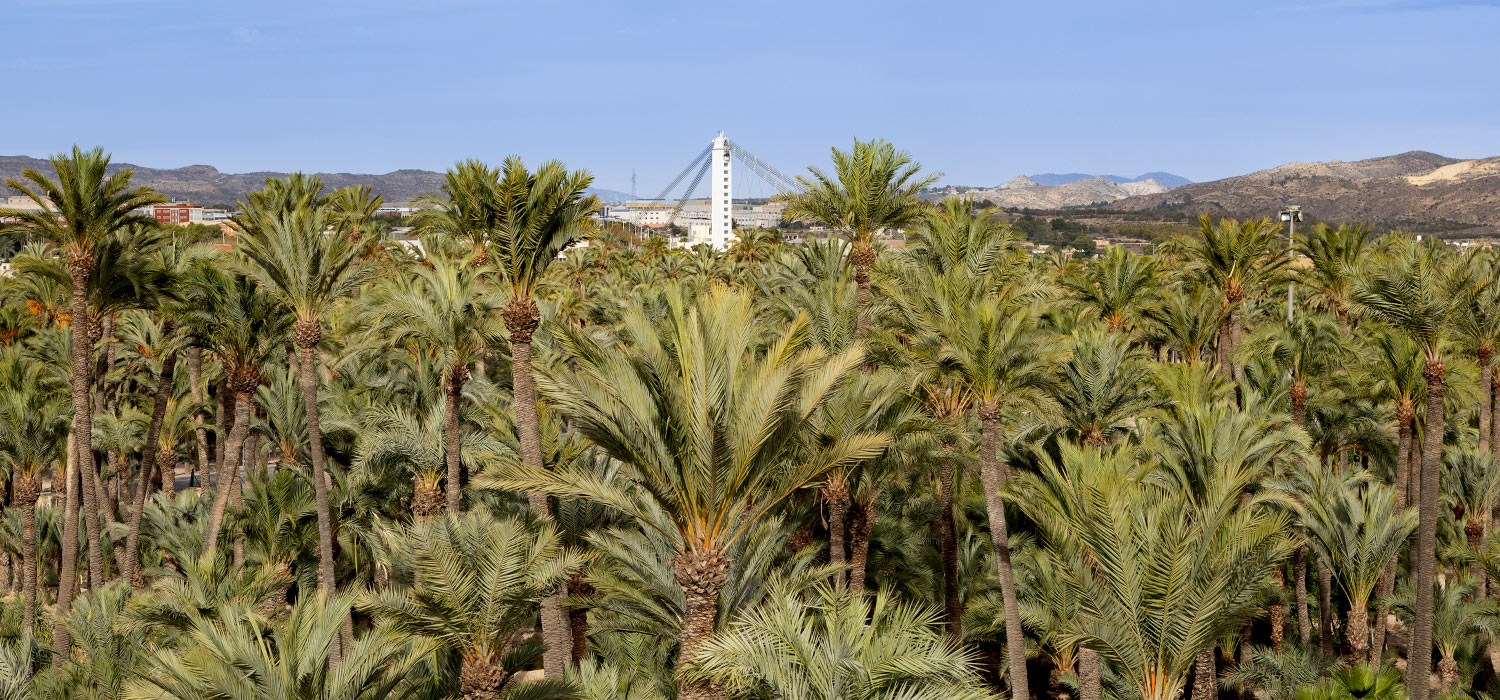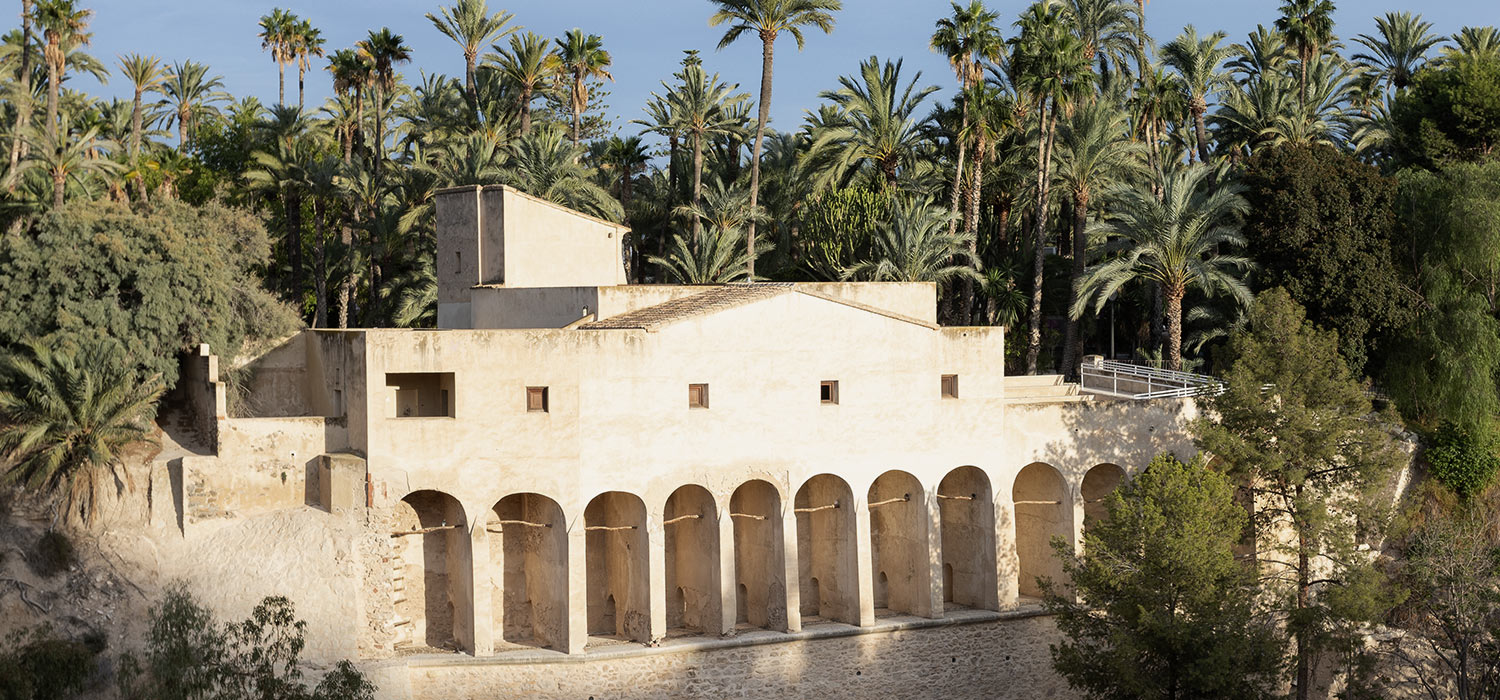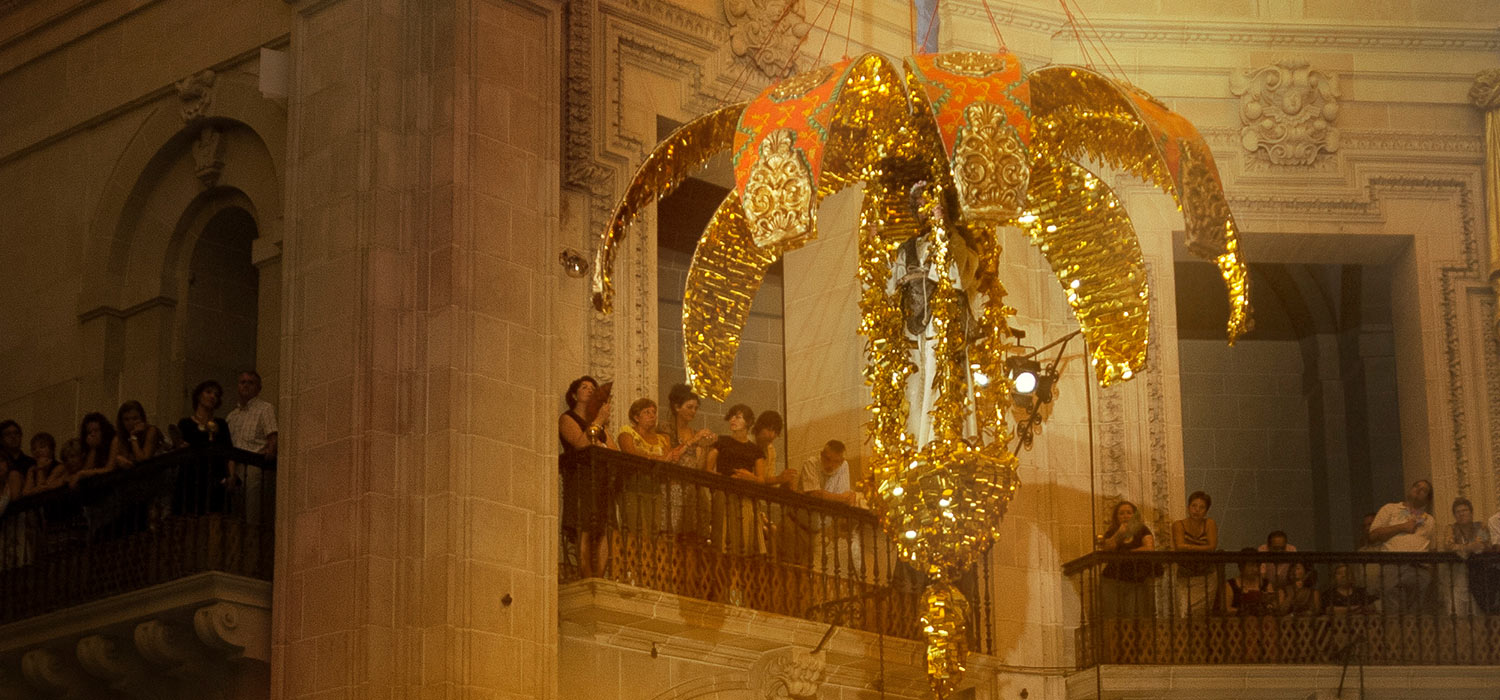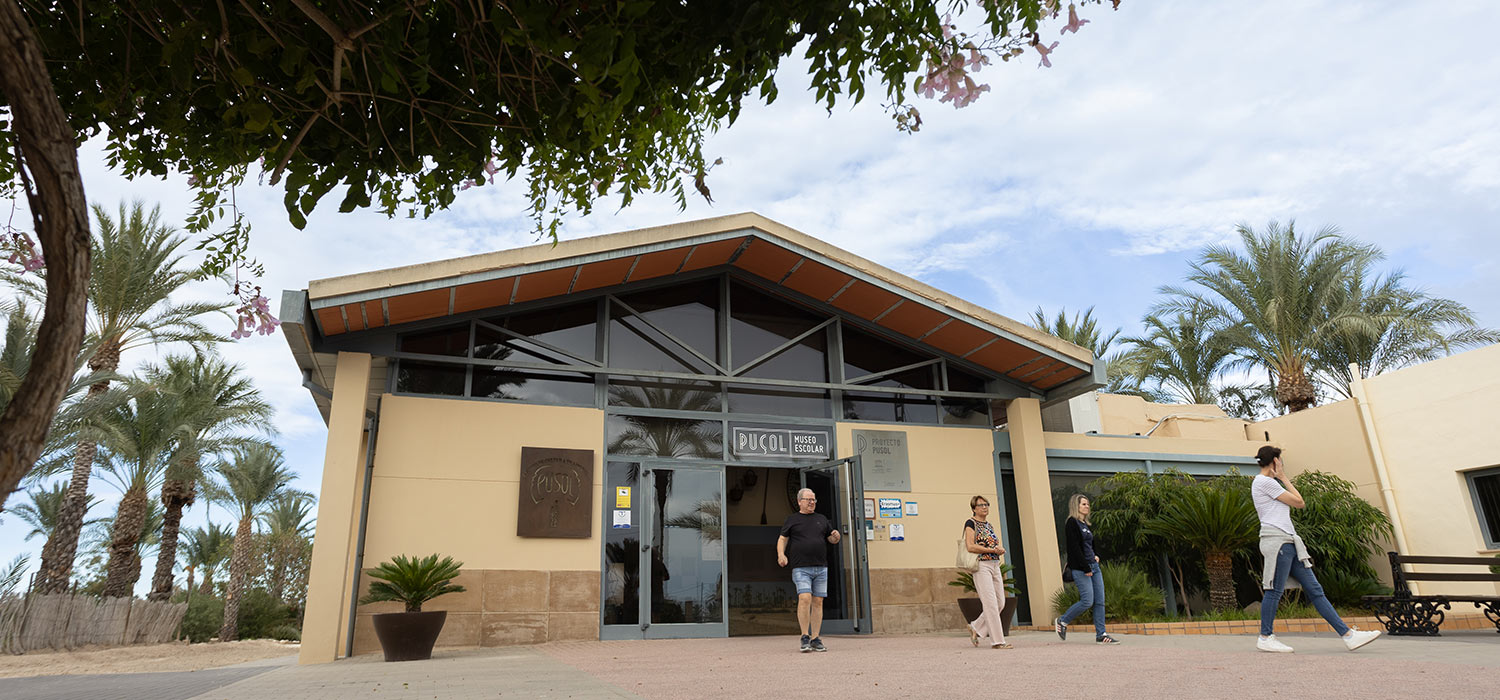ELCHE, WORLD HERITAGE
Three treasures of Elche: the Misteri, the Palmeral and the Pusol Museum
The Palmeral of Elche



The Palmeral is the millennial heart, alive and vibrant of Elche. Without the Palmeral Elche wouldn’t be the same, because the palm grove has been its hallmark throughout its history. For the locals, the memory of the palm grove makes them nostalgic when they are far away and the sight of it brings joy to their hearts when they return to Elche. And the smell of the palm groves… And the taste of the dates… And the sound of the breeze when it dances between the palm fronds… And the always familiar feel of the centenarian trunks… But this is not just the heritage of Elche anymore, because the Palmeral of Elche was declared to be World Heritage in 2000.
The Palmeral of Elche is an enormous oasis, an immense urban forest of more than 200,000 date palms and 50,000 more in municipal nurseries just waiting to be planted. It is the biggest palm grove of Europe.
And although the palm tree is endemic in Elche, which is proved in the images on the Iberian pottery Vessels of Ilici, the existing layout of the palm groves and their extensive irrigation network dates back to the times of the Moors (8th and 9th centuries). And then in the medieval times, perhaps in the 14th or 15th century, the Palmeral of Elche started to bear fruit, along with the dates, whose fame continues to be universal: the white palm fronds of Palm Sunday.
El Misteri d’Elx


The Misteri or Festa d’ Elx is a another genuine hallmark of the citizens of Elche. In a liturgical drama that is sung, which dates back to medieval times, the Dormition or transition, the Assumption and the Coronation of the Virgin Mary is commemorated. It is divided into two acts: the Vespra (the Eve), which is performed on the 14th of August, and the Festa (Feast), on the 15th of August. It is performed in the Baroque Basilica of Santa María, built especially to stage its Mystery play. However, just like the Palmeral, the Misteri is no longer just the heritage of the citizens of Elche, because UNESCO declared it to be a Masterpiece of the Oral and Intangible Heritage of Humanity in 2001, and it was the first of its kind to obtain this award.
Although its origins date back to the Middle Ages, it was in the 15th century that the Misteri started to be performed as we know it today. And in each period it has been performed in the very best way known by the people from Elche. That is why it includes medieval monodic songs and polyphonic songs of Renaissance descent and Baroque polyphonic pieces. And despite numerous ups and downs of history, such as wars, epidemics, prohibitions or the lack of funding, the citizens of Elche have kept it alive up to the present day.
Would you like to find out more?
https://www.visitelche.com/fiestas/misteri-delx/
The Puçol School Museum



If we forget our roots and our past, we become a society without a present or a future. The Pusol Centre for Traditional Culture revives all this wealth that our seniors used to make Elche what it is today. With their daily lives and distresses, they have left us the immense Countryside of Elche, which goes from the landscapes of palm trees and deserts to the exuberant vegetable gardens and pomegranate orchards.
The Puçol School Museum revives the past through everyday objects, the homes, the schools, the shops, the farm work… And together with its museum work of recovery and research, it is a lively school with an educational project that has become an international and national benchmark. As a result of this work, the Committee to Safeguard the Intangible Heritage of UNESCO included it in the Register of Practical Examples in 2009.
Would you like to find out more?
https://www.visitelche.com/patrimonios-de-la-humanidad/museo-de-pusol/